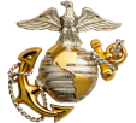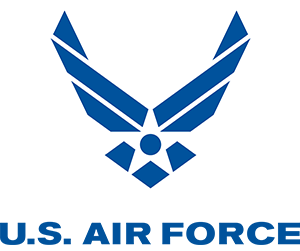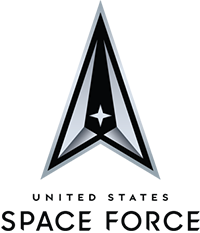Life in the Military
Duty Stations & Deployment
After service members complete Basic Training and hone their skills during Advanced Training, like AIT, “A” School and “C” School, they’ll move on to apply their specialties where they’re needed at their first duty station. Each assignment involves a “movement order,” and there are three types: permanent change of station, temporary duty and deployment.
On This Page
Permanent Change of Station
Permanent change of station (PCS) is a long-term assignment or transfer of an active-duty service member to a permanent duty station (PDS) location that typically lasts between two and four years. This can be from one state to another within the U.S. or even to another country.
Duty stations are typically bases or other installations where service members both live and perform their work. Though service members can sometimes choose from several preferred duty stations, the needs of the Military are often the deciding factor.
Moving between duty stations can be a big life step for many individuals. If this is the case, knowing a few helpful tips can make this transition more comfortable.

Temporary Duty
Temporary duty (TDY) is when a service member is temporarily stationed at one or more locations away from their permanent duty station (PDS). It can also be referred to as temporary change of station (TCS) or temporary additional duty (TAD). After completing TDY, a service member will return to the original PDS or proceed to a new one. The duration of a TDY assignment can be anywhere between 30 days and six months.
Deployment
Deployment is the movement of military units or individual service members to locations outside of the continental U.S. and its territories for the purposes of accomplishing specific missions. Contrary to popular belief, not all deployments are combative in nature. Service members can also make an impact by being deployed on peacekeeping missions, citizen evacuations, joint training exercises and even bolstering security at U.S. high commissions and embassies abroad.
Deployment can last from anywhere between 90 days and 15 months, and there are no limits to the number of times that active-duty members can be deployed.
Deployment: From Notification to Movement
Deployment is a multi-stage process that typically consists of three phases:
- Warning order: This is a formal and official government alert sent to Service branches that their help is required. From here, Services “prepare to deploy” by identifying personnel to satisfy the mission requirements, conducting health tests, getting their equipment ready and more.
- Notice to deploy: This formal deployment notification follows the warning order and carries the details of the type of unit to be deployed, the destination and the time of deployment.
- Movement: This is when the convoys/units begin their journey toward their deployment destination.
Depending on the need of the mission and the urgency, the time between the warning order and the movement can be anywhere from months to weeks to days.
Deployment Ceremony
A few leaders from the Army’s 326th Financial Management Support Center share their thoughts during a deployment ceremony.
Length 1:17 View TranscriptTranscription
Good morning. So, I'm Master and Rivera. I'm the Senior financial management advisor for 3 26 F . M . S . C. Today, uh is our deployment ceremony. I'm excited to be taking the team forward. We have trained up to this point and I feel confident that we're ready to take over the mission from the 266. I know I will miss my family, but this is something that gives me meaning so they understand that. So they'll be happy to see me when I get back. Hello, My name is Captain Danny . Nam. I just got promoted. I'm just very excited just to get to play with our unit. Very excited for the whole process, thankful for everything that the 3 to 6 has done for me and my family and um yeah , I'm really excited to learn and kind of make the best of the moment that we have and the opportunity that we get Sergeant first class David Ramirez at the 3 26 F . M . S . C . I've been serving as a unit movement officer for the past nine months in preparation for this deployment. This will be my fourth deployment to the centcom A . O . R . I'm really excited about going overseas with this unit for the third time. I'm looking forward to it. I will be leaving behind my wife and my five year old and seven year old who I'm gonna miss but I know I will be able to communicate with them. I'm excited about this opportunity to be overseas and represent my unit and the army.
Deployment Ceremony
Predeployment Training
Each deployment is a new assignment, and service members undergo special predeployment training before they leave. These trainings prepare them for the mission ahead and can have the service members working on new skill sets if need be. Predeployment training is mandatory before every deployment, no matter how many times a service member has previously deployed.
Deployment for Reserve & Guard Members
Reservists and Guard members who get activated for a mission can be deployed to support combat missions, domestic emergencies, humanitarian efforts, homeland security operations and more. The length of deployment depends on the occupational specialties and operational units required at that time.
Humanitarian Missions
Humanitarian assistance and disaster relief are core Department of War capabilities. While service members often respond to large-scale emergencies affecting civilian populations, they also assist in international humanitarian missions, which are aimed at strengthening and growing relationships between nations.
Bringing Dental Care to Guatemala
Active duty and reservist personnel from the Army and Air Force administer healthcare to local populations in Guatemala.
Length 1:04 View TranscriptTranscription
We are on a humanitarian mission in Guatemala and we are providing dental services at this site. And we are cleaning teeth, doing extractions and in cases where cavities are really small. We can do silver diamond fluoride which basically helps arrest the cavity. So it doesn't spread. We're making a small event in their population. I wish we could stay longer and do more. It's been at times intense and I say that because there's just such a great need. We really work hard to try to see everybody. I think it's good for the U. S. Military that comes with missions like these because it helps strengthen the relationships and we get to learn a lot about their culture. They get to learn a lot about our culture. So it's really great I am so happy to have this opportunity. When you look at the very essence of why we became providers often times we've done it because we felt like we wanted to contribute to society to help people and when you're in an environment like this, I mean that is exactly what it's all about. Yeah.
Bringing Dental Care to Guatemala
Sea Duty
Sea duty refers to an assignment where service members are either aboard commissioned vessels or attached to ready-to-be deployed units at their base port. This specific type of duty is not limited to Navy service members. Members of other Service branches, both active duty and reserve/guard, can also acquire creditable sea duty time while serving aboard vessels of the U.S. Navy, U.S. Coast Guard, U.S. Navy Military Sealift Command (MSC), and National Oceanographic and Atmospheric Administration (NOAA). Sea duty can last in excess of 150 total days per year.
Voting While Abroad
U.S. citizen service members who find themselves overseas and away from home during election seasons are still able to cast their votes using tools and resources provided through the Federal Voting Assistance Program (FVAP).
Eligible family members of service members who are also stationed abroad are able to receive voting assistance through FVAP too.










